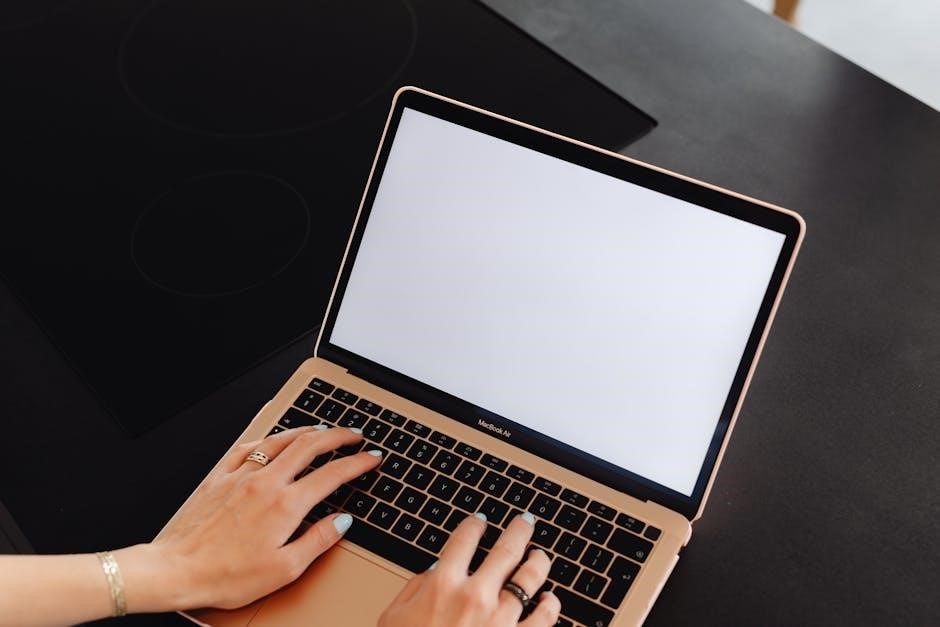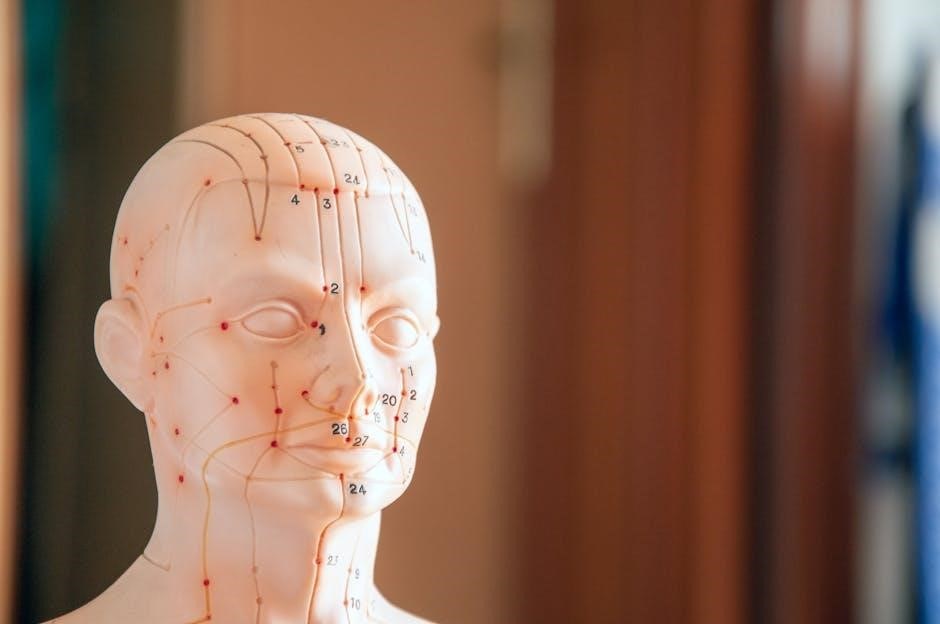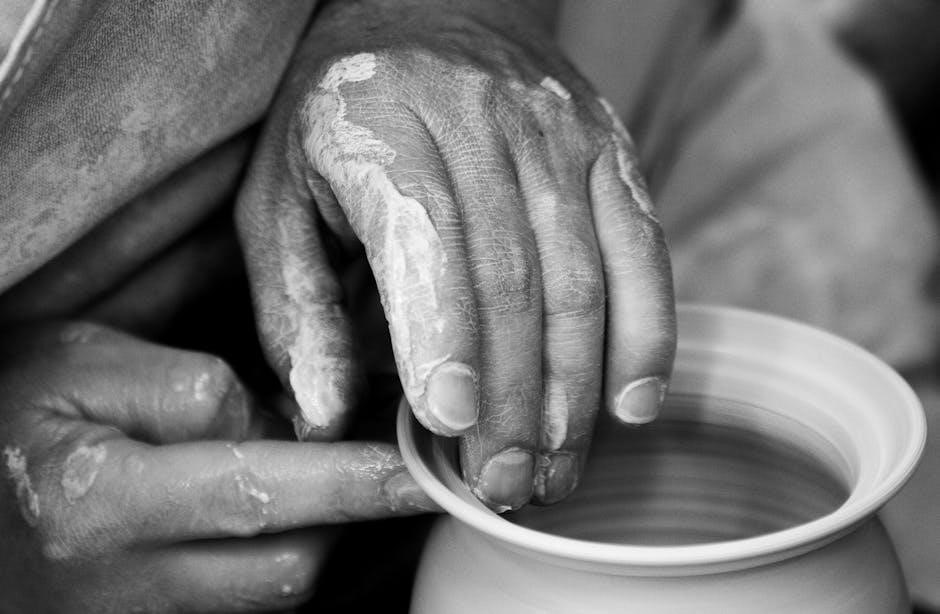Manual psoas release is a technique used to relieve tension in the psoas muscle‚ improving posture and mobility‚ with targeted stretches and hands-on techniques for lasting relief always․
Understanding the Psoas Muscle
The psoas muscle is a deep-seated muscle in the body‚ playing a crucial role in hip flexion and lower back movement․ It is located in the abdominal region‚ originating from the lumbar spine and inserting into the femur․ The psoas muscle is often referred to as the “muscle of the soul” due to its connection to the emotional and spiritual aspects of the body․ Understanding the anatomy and function of the psoas muscle is essential for effective manual psoas release techniques․ The psoas muscle can become tight and restricted‚ leading to lower back and hip pain‚ as well as poor posture and limited mobility․ By understanding the psoas muscle and its functions‚ individuals can better appreciate the benefits of manual psoas release and take steps to maintain a healthy and balanced psoas muscle․ This knowledge is essential for overall well-being and optimal physical function․

Benefits of Manual Psoas Release
Manual psoas release provides improved posture and mobility always naturally․
Relief from Back and Hip Pain
Relief from back and hip pain is a significant benefit of manual psoas release‚ as it helps to alleviate tension in the psoas muscle‚ which can contribute to pain in these areas․ The psoas muscle plays a crucial role in hip flexion and lower back movement‚ and when it becomes tight or inflamed‚ it can cause pain and discomfort․ Manual psoas release techniques‚ such as targeted stretches and hands-on techniques‚ can help to release tension in the psoas muscle‚ providing relief from back and hip pain․ This can be especially beneficial for individuals who experience chronic pain in these areas‚ as it can help to improve their overall quality of life․ By releasing tension in the psoas muscle‚ individuals can experience significant relief from back and hip pain‚ allowing them to move more freely and comfortably․ Regular manual psoas release can also help to prevent future episodes of pain․

Techniques for Manual Psoas Release
Targeted stretches and hands-on techniques are used for manual psoas release always effectively․
Targeted Stretches and Hands-on Techniques
Targeted stretches and hands-on techniques are essential for manual psoas release‚ allowing for a deeper and more effective release of tension in the psoas muscle․ These techniques can be used in conjunction with other methods‚ such as exercise and education‚ to provide lasting relief from back and hip pain․ By using targeted stretches and hands-on techniques‚ individuals can improve their posture and mobility‚ reducing the risk of further injury or strain․ Additionally‚ these techniques can be used to release tension in other areas of the body‚ promoting overall well-being and relaxation․ With regular practice‚ individuals can experience significant improvements in their overall health and quality of life‚ making targeted stretches and hands-on techniques a valuable tool for maintaining optimal health․ Effective techniques are used to release the psoas muscle‚ improving overall health and well-being always․

Tools for Manual Psoas Release
Specialized tools like the QL Claw are used to release the psoas muscle‚ providing relief from tension and pain always with effective results and benefits;
Psoas Release Tool ⸺ QL Claw
The QL Claw is a specialized tool designed to release the psoas muscle‚ providing relief from tension and pain․ This tool is particularly useful for individuals who experience tightness in the psoas muscle‚ which can lead to back and hip pain․ The QL Claw is used to target the quadratus lumborum and psoas muscles‚ helping to relax and release tension in these areas․ By using the QL Claw‚ individuals can experience improved mobility and reduced pain‚ allowing them to move more freely and comfortably․ The QL Claw is a valuable tool for anyone looking to release tension in the psoas muscle and improve their overall well-being‚ it is easy to use and provides effective results always with benefits․ Regular use of the QL Claw can lead to lasting relief from psoas-related pain and discomfort․
Post-Release Care
Proper care after manual psoas release includes exercise and education for lasting relief always naturally․
Importance of Exercise and Education
Proper care after manual psoas release is crucial for lasting relief and includes exercise and education․ This is because the psoas muscle plays a significant role in overall mobility and posture․ Without proper exercise and education‚ the muscle may tighten again‚ leading to recurring pain and discomfort․ Exercise helps to strengthen the surrounding muscles‚ while education provides individuals with the knowledge to maintain proper posture and movement techniques․ By combining manual psoas release with exercise and education‚ individuals can experience lasting relief from back and hip pain‚ improved posture‚ and enhanced mobility․ This comprehensive approach is essential for achieving optimal results and preventing future issues․ Regular exercise and ongoing education can help individuals maintain a healthy psoas muscle and overall well-being․

Common Misconceptions about Manual Psoas Release
Manual psoas release has several misconceptions surrounding its effectiveness always needing clarification and explanation clearly every time․
Defining Psoas Release
Defining psoas release is crucial to understanding its benefits and proper techniques․ According to various sources‚ psoas release refers to the process of relieving tension in the psoas muscle․ This can be achieved through manual therapy‚ targeted stretches‚ and hands-on techniques․ The psoas muscle plays a significant role in our overall mobility and posture‚ and releasing tension in this area can have a profound impact on our well-being; By defining psoas release and understanding its underlying principles‚ individuals can better appreciate the importance of this technique in maintaining optimal physical health․ Furthermore‚ a clear definition of psoas release can help to establish a common language and understanding among practitioners and individuals seeking to benefit from this technique‚ ultimately leading to more effective and successful outcomes․ Proper definition is essential for effective treatment and relief․
Manual psoas release provides lasting relief and improved mobility always naturally․
Effectiveness of Manual Psoas Release
Manual psoas release has been shown to be effective in providing relief from back and hip pain‚ with many people experiencing significant improvements in their overall mobility and posture․ The technique involves the use of targeted stretches and hands-on techniques to release tension in the psoas muscle‚ which can become tight and restricted due to a variety of factors‚ including poor posture‚ injury‚ or overuse․ By releasing this tension‚ manual psoas release can help to improve range of motion‚ reduce pain and discomfort‚ and enhance overall well-being․ Additionally‚ the use of specialized tools‚ such as the QL Claw‚ can be beneficial in releasing the psoas muscle‚ particularly in cases where manual release is not possible or effective․ Overall‚ manual psoas release is a valuable technique for anyone looking to improve their mobility and reduce pain․
